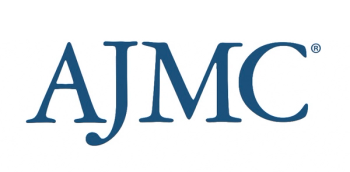
Moving From Risk-Based to Population-Level Screening in T1D?
While clinical trials have screened people with family risk of type 1 diabetes for many years, population-level screening for autoantibodies is not the norm.
The onset of type 1 diabetes (T1D) can be extremely dangerous. Young children or teenagers who develop T1D may be unaware they have the condition until they are diagnosed with diabetic ketoacidosis (DKA); this occurs when the body lacks enough insulin to break down glucose and starts breaking down fat, releasing ketones into the body and causing acids in the blood. In a small number of cases, cerebral edema occurs, which can be fatal without prompt treatment.
For these reasons, diabetes researchers have been screening people with a
DKA prevention can occur by identifying tell-tale symptoms, or through population-level screening of children for autoantibodies that signal the coming onset of T1D. For children at risk of T1D, the window of age 4-7 is of special interest, as this is the first of 2 distinct peaks before adulthood when disease onset is most likely to occur.
While patients and families may experience T1D as something that comes out of nowhere, years of research, including a
A pair of recent efforts show the potential of widespread screening to identify children before T1D fully develops; as researchers of a German study wrote, the findings “may inform considerations of population-based screening of children for islet autoantibodies.”
The Fr1da Study. Published in January 2020 in JAMA, this study screened more than 90,000 children in Bavaria, Germany, between 2015 and 2019 during well-baby checkups. Funded by JDRF and conducted by the Institute of Diabetes Research in Germany,1 the study identified children who were found to have multiple islet autoantibodies, indicating presymptomatic T1D. Once these children were identified, their families were given the chance to take part in education sessions and assessments to determine what metabolic stage they had reached. DKA frequency was recorded and parental stress was assessed. Only 2 children developed DKA.
The median age of the children screened was 3.1 years, and 48.5% were girls. Of those screened, 280 (0.31%) had presymptomatic T1D, including 196 (0.22%) with stage 1, or normoglycemia; 17 (0.02%) with stage 2, or dysglycemia; and 26 (0.03%) with stage 3, with clinical T1D. The remaining 41 children were not staged. After a median follow-up of 2.4 years, another 36 children had developed T1D. Researchers found the 3-year cumulative risk for developing clinical T1D among the 280 children with presymptomatic T1D was 24.9%, with an annualized rate of 9%.
Opportunity for treatment? Authors of the Fr1da study noted that while screening occurred during a period when preventive therapy was not available, the prospects had shifted by the time they published their results in early 2020—the anti-CD3 antibody,
JDRF, which has long funded diverse research projects aimed at preventing T1D, now has a high-profile screening effort under way
Why get screened? As JDRF explained when the program was launched in December: “The program’s aim is to make people understand what type 1 is, how screening is advantageous to the public, how they can be involved, and what to do if you are positive for autoantibodies.”
Reference
1. Ziegler AG, Kick K, Bonifacio E, et al. Yield of a public health screening of children for islet autoantibodies in Bavaria, Germany. JAMA. 2020;323(4):339-351. doi:10.1001/jama.2019.21565
Newsletter
Stay ahead of policy, cost, and value—subscribe to AJMC for expert insights at the intersection of clinical care and health economics.







































